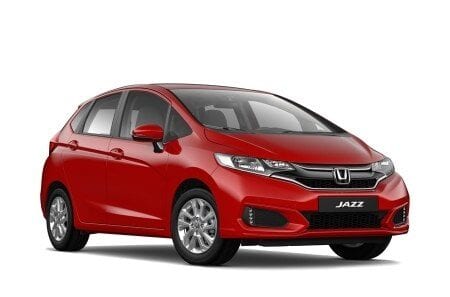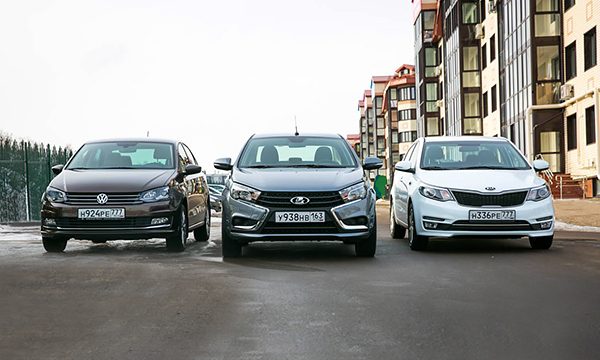
Test drive Lada Vesta against Kia Rio and VW Polo
Better than Vesta in the segment of affordable sedans, only Hyundai Solaris and Kia Rio are sold, which mostly argue with each other and are gradually becoming more expensive.
“You are listening to Radio Russia. Interestingly, in all of Moscow there is at least one more person who tuned the radio of his car to a frequency of 66,44 VHF? I myself, I must admit, turned on this station by accident, traveling through the menu of the audio system of the Lada Vesta sedan. The band, forgotten by all, lost its relevance back in the 1990s, and now eight stations work in it, five of which duplicate analogs from FM. Why is he here? It seems that when issuing a technical assignment for an audio system with support for MP3, USB and SD-cards, the VAZ employees really wanted to adapt it at least a little - what if Vesta finds itself in some protected corner of the country, where old transmitters have been operating since the times of the Union? But why, over the several months that Vesta spent in the editorial office, I could not or did not want to understand the nuances of setting up the system?
Since the debut of the model, the car has become one of the market leaders. The euphoria has gone, talk about the justification and unjustification of expectations has faded away, and Vesta has long been entrenched in the fifth place on the market bestseller list, symbolically ahead of Volkswagen Polo. Better than Vesta in the segment of affordable sedans, only Hyundai Solaris and Kia Rio are sold, which mostly argue with each other and gradually rise in price, and the cheap Granta, whose buyers are also increasingly looking either at the “Koreans” or at the new VAZ sedan. It is clear that Vesta has not fizzled out, and this gave a reason to once again take a closer look at the ratio of its consumer qualities in comparison with its competitors. During this time, Rio managed to simultaneously rise in price and get close to its twin competitor Solaris at an attack distance, and Polo went to the people with an easy restyling and an upgraded engine.
Let's make a reservation right away: Vesta is losing the dispute in the "Automotive Electronics" section. In many ways, also because it is not easy to understand the instructions for it. Is it possible today to attach a booklet to a modern car, in which the audio system is called the abbreviation RPiPZF, and the system for adjusting it resembles the manual of a secret research institute? “In the variant version, the car is equipped with a radio receiver and a player for sound files (hereinafter RPiPZF) or multimedia navigation equipment (hereinafter OMMN). RPiPZF and OMMN are designed to be connected to the vehicle's on-board network of 12 V with a minus on the body ", - I don't want to read further.
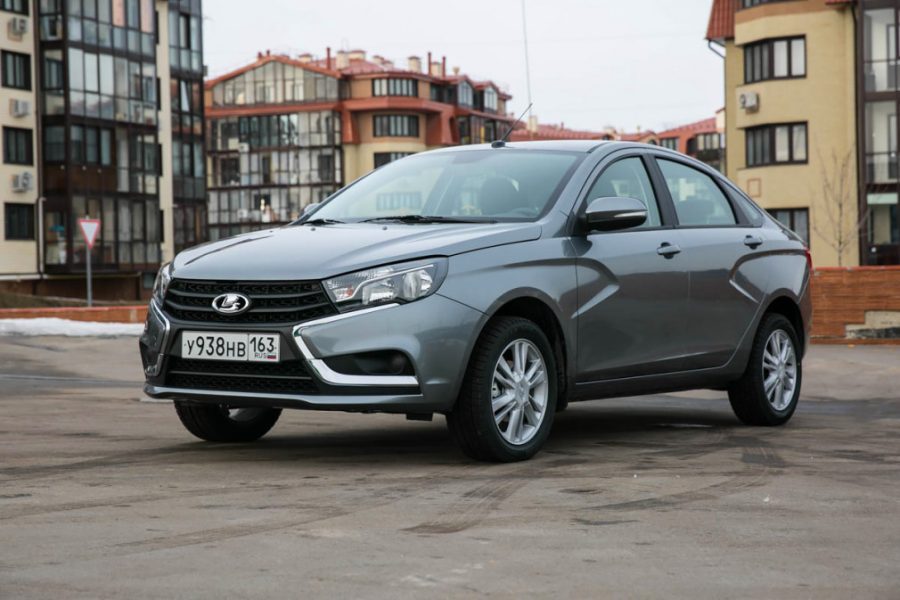
This is sheer absurdity for a car that otherwise fits perfectly into the concept of a modern car - both in design and equipment, and in its X-style Steve Mattin. Among the competitors, the car stands out for its bold appearance, and it is not even the "X" itself that surprises - modern production allows making surfaces even more complicated - but the fact that the Lada nameplate hangs on it and looks quite harmonious there. Although the nearby Kia Rio is also not a simpleton. The fine profile is well emphasized by the neatly cut corners of the radiator grille and headlights - after last year's update, the sedan looks no less dynamic than the older models of the brand, and does not get lost at all in the Moscow stream of expensive lacquered bodies. The middle-aged Polo, in whose guise you can feel experience and peace, against this background - the very modesty, even taking into account the recent updates. The German sedan got nice LED lights, the turn signal repeaters moved to the side mirrors, and their place on the fenders was taken by plugs with the name of the complete set. All this did not rejuvenate the Polo too much, but the Germans clearly showed that the car was not going to rest yet.
Out-of-class luxury is a characteristic that comes to mind when seeing the contrasting two-tone interior of the refreshed Polo. Playing with colors makes you take a fresh look at the boring interior. A trendy, truncated steering wheel and a color touchscreen on the console also bring an antiquated interior to life. Otherwise, everything is the same: boring environment and pretty decent ergonomics. Rigorous instruments look indifferently at the driver, the chair meets with dense padding and the correct shape, and the keys and handles delight with perfect efforts. Behind - as in a good economy-class taxi: there is enough space, but I don't really want to go on a long journey here.
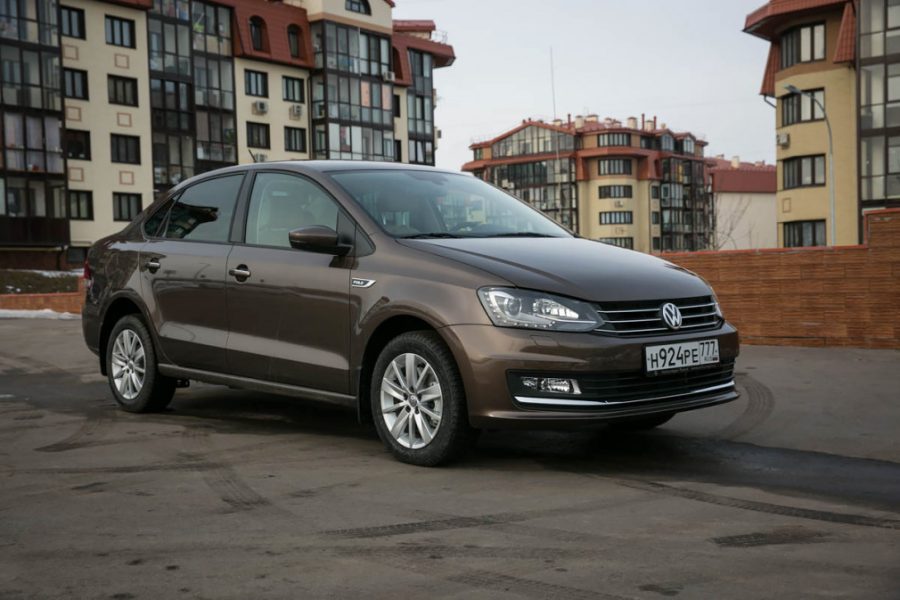
Vesta offers a markedly different level of passenger comfort. You can sit in the back here without any discounts on the B-class and restrictions on the number of neighbors. The same sense of spaciousness in the front, with the Lada providing the driver with a more mature fit, typical of models in the class above. Similar feelings were once experienced by those who transplanted from a VAZ "penny" with its scanty seats into a VAZ-2109 with a low seating position and almost sporty, as it seemed then, armchairs. Only in Vesta you sit really comfortably and at ease, the seat with an unobtrusive profile is adjustable in height and has a waist support, and the steering wheel is adjustable in two planes. Nice devices are hard to read in the daytime, but in the dark, when the backlight is turned on, they please the eye.
The ERA-GLONASS keys fit perfectly into the ceiling console, and it's even a pity that their function is exclusively emergency. The handles on the ceiling are equipped with a microlift, which is also nice. The Vesta interior is a novelty for a domestic car, the interior is assembled well, and the materials do not cause rejection. But an air conditioner with a digital display and manual adjustments is a failure. Firstly, the handles are uncomfortable and very vaguely resist rotation. Secondly, setting up the system is difficult and inconvenient. And for some reason, full-fledged climate control with temperature control is not offered even for an extra charge.
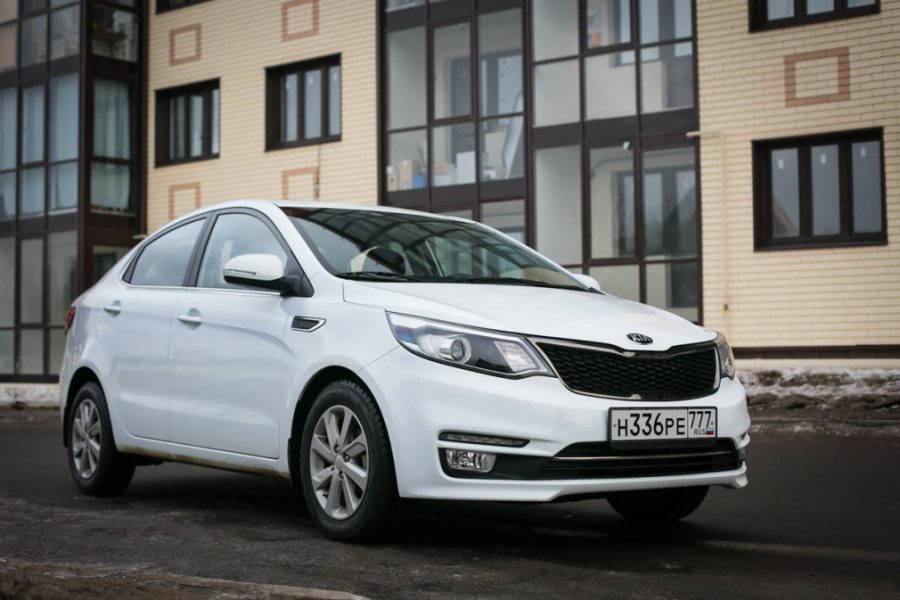
There is so much in the Vesta onboard computer, but again I don’t want to figure out how it works here and which of the keys must be pressed or held down one, two or three times. The same story with the media system: "OMMN is switched on by short pressing (1-2 sec.) On the encoder knob 4 (Fig. 3)". There are many settings and functions, but to access them you need to masterfully master the system of clicks and rotations of the notorious "encoder", resigned to the clerical language of the operating manual. Therefore, buying a version with a touch system and, for an additional fee, a rear-view camera looks like a reasonable alternative. Neither the Polo nor the Rio have a camera even on the list of options.
Kia gives the customer smarter choices in terms of equipment, but that choice, alas, cannot be arbitrary. The Korean sedan, like the Vesta, offers options in packages. None of them has a sensory media system, but the standard installation, which all versions, except for the two simplest ones, are supposed to install, is simple, understandable and quite functional. Climate control also works adequately, only slightly inferior in convenience to the Polo system. A bonus is a heated steering wheel, again available in almost all versions, as well as a windshield for older trim levels. The Rio's interior is pretty and enjoyable, the gauges are beautiful and descriptive, and the finishes seem richer than the Polo and look a bunch better than the Vesta.
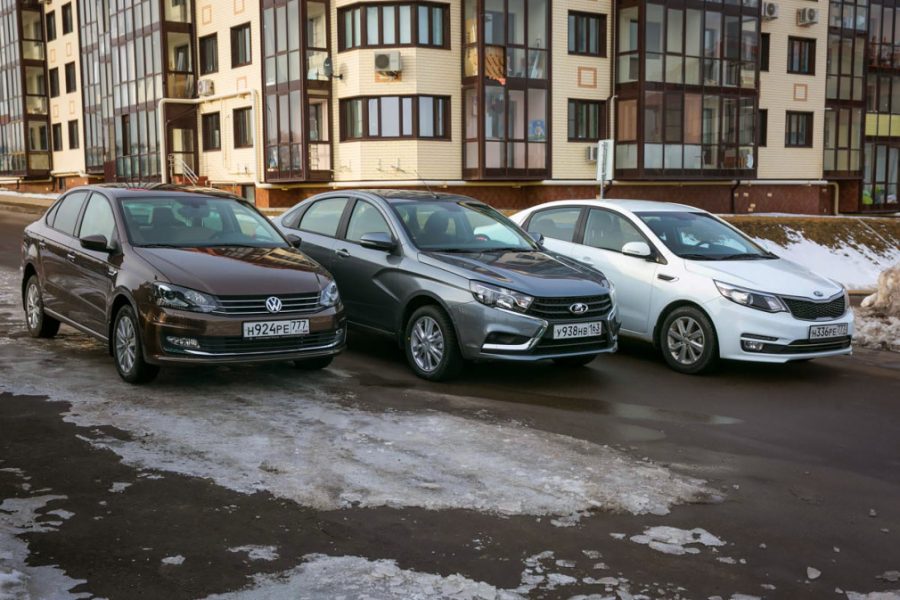
Sitting behind the wheel of the Rio after the Togliatti sedan, you understand that it is cramped here. The ceiling seems to hang over your head, and the right door can be easily reached with your hand. The desire to go far behind is even less than in the Polo, and the average passenger is completely superfluous here and even lacks a headrest. As a family car, the Rio is not the best option, but, as is often the case, the driver here feels quite comfortable here. The ergonomics of the Rio allow you to position yourself right behind the wheel - just enough to start enjoying the ride right away with precise pedaling and effortlessly flipping the short-travel six-speed gear lever.
The Rio in our trio is equipped with the most powerful motor, and you can feel it right away. With a mechanical box, the dynamics of the car will be the envy of competitors - vigorous acceleration, cheerful promotion to the highest revs. Not bad and Polo with an upgraded 110 horsepower engine. 5 hp increase hardly made the sedan more dynamic, but the motor works out all its capabilities honestly. If there were not five, but six-speed "mechanics" here, Volkswagen could well outstrip the more powerful Kia. In terms of dynamics - parity, but the Rio with a "six-speed", it seems, can more flexibly adapt to the driver's driving style.
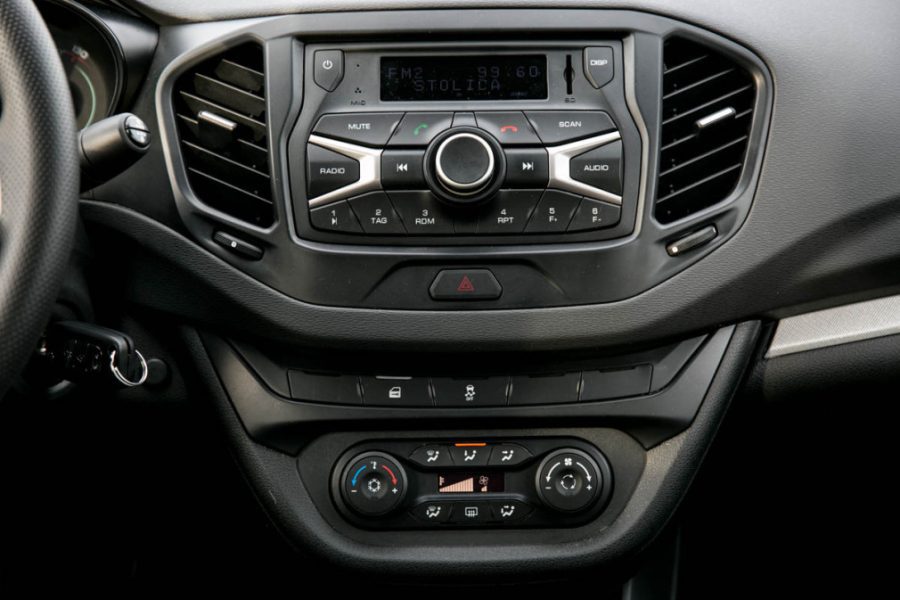
Vesta is lagging behind, but the gap is small. VAZ engine with a capacity of 106 hp. pulls decently from the bottom and gets along well with the French manual transmission. You can ride very dynamically, but in extreme modes Vesta is not so good. In addition, the engine makes noise, and when starting off, it buzzes lively with gears and rustles with drive belts. On the move, Vesta seems to return a dozen years ago: something creaks somewhere, the suspension rattles on bumps, and the manual gearbox lever kicks the palm amusingly when the thrust is suddenly released or the accelerator is pressed. Well, at least, the French "mechanics" does not howl the same as the native Togliatti box. Yes, and it is tuned decently - the cable drive ensures crisp shifting and does not frighten with long lever strokes.
The VAZ sedan gives the driver the feeling of a mechanism with which he is left alone, and it cannot be said that this is a bad feeling. A slightly forgotten, almost nostalgic feeling of driving, unclouded by the filters of refined suspensions, noise insulation mats and the power steering hydraulic system. For those who truly love the car as a mechanism, this feeling evokes an attack of pleasant nostalgia for the times when cars had to be really driven. In this sense, Vesta is not entirely modern, but it does not fall apart on the go and leaves the impression of a completely solid product that does not require any discounts on driver skill. The sedan is stable on a straight line, gambling and safe - epithets that would look more logical in the description of the Polo. Moreover, the noisy suspension turns out to be impenetrable, and the steering is precise and understandable. The amp lacks transparency in very fast turns, but overall the sedan's ride balance is very good.
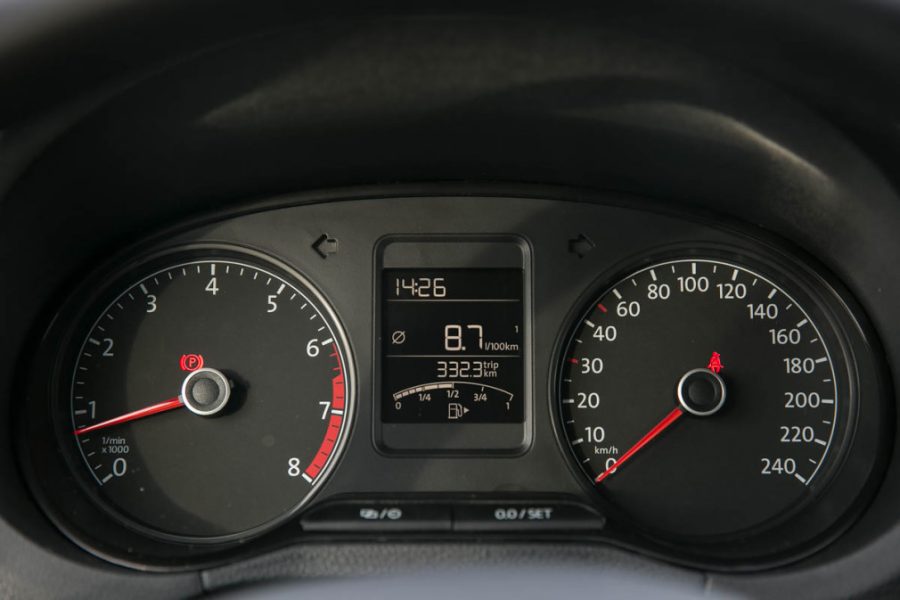
The Volkswagen chassis, of course, is no worse than the Togliatti in corners, but you can't expect anything else from the obedient Polo with its precise steering wheel. Straight line stability is almost perfect. The order is such that it is not even interesting - the car drives clearly, accurately and predictably. Unevenness can be passed by running, although there is a limit - having jumped over an artificial unevenness in a big way, Volkswagen will loudly object with a shock from the suspension.
The Polo's handling seems to be the benchmark only until you get behind the wheel of the Rio. And even if the Polo is a little faster, it is more pleasant to turn corners on the Rio with its lively responses to the steering wheel and a reinforced concrete connection between the driver and the wheels. On good road the suspension works perfectly, but on bumpy roads it turns out to be predictably stiff. And at speed, the car begins to dance slightly, simultaneously giving out too much unnecessary information on the steering wheel. But the Rio is the quietest of the trio.
An interesting situation: the models that share seats in one of the most budgetary segments today are perfectly tuned and can not only play the role of personal transport, but also carry the driver with pleasure. The struggle for the client is becoming more and more contact, and not only design and equipment, but also sensations are used. For example, Volkswagen Polo attracts with a sense of quality in every detail, and this cannot be added to the list of options. But you look at the price tag of the test Polo - and you are surprised: almost $ 12. for the B-class sedan. Having played with the configurator, the price of a car with a 080-horsepower engine and normal equipment can be put at $ 110, but the Rio will be equipped for the same amount just as well.
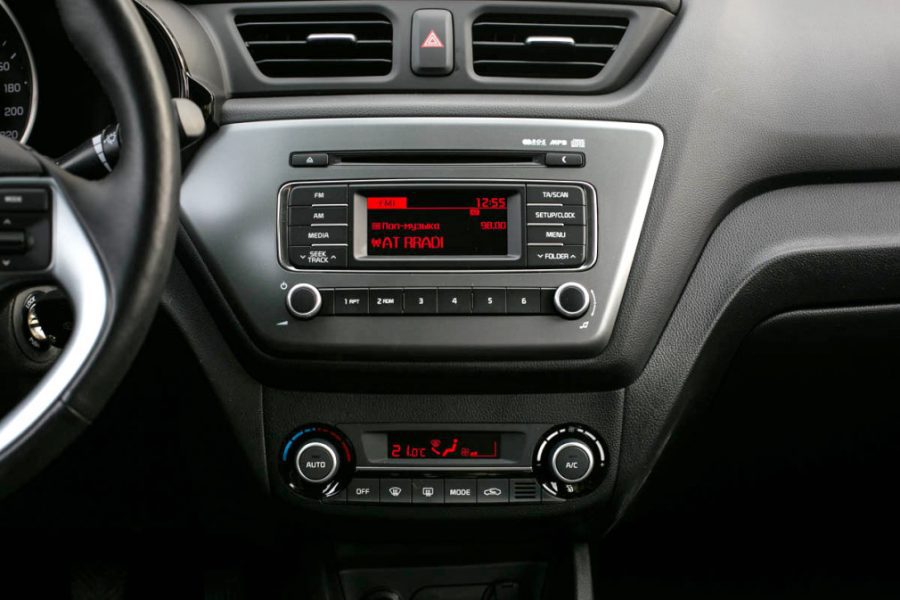
The Lada Vesta in the middle Comfort configuration with a manual transmission is in the greatest demand - 6577 cars were sold in five months. Prices for such cars start at $ 7. They also buy a sedan in the basic version of the Classic with "mechanics" without parking sensors, with simpler seats and unpainted mirrors (812 cars). The share of cars with a robotic box in all trim levels barely exceeds 4659% (20 cars).
Of the 30 thousand Rio sold in five months, the number of sedans is 24 356 units. The most popular version - with a 1,4 liter engine and "mechanics" in the initial configuration Comfort (4474) costing from $ 8. But in general, Russians more often choose a 213-liter engine and an "automatic", and the most popular version with such an engine is the well-equipped Rio Luxe with automatic transmission - 1,6 cars were sold for at least $ 3708.
The Polo sedan is best sold in the second Comfortline trim with automatic transmission. Prices start at $ 9. In second place with the result of 926 cars is the cheaper Trendline with "mechanics" and the price from $ 2169. Moreover, in general, cars with manual gearboxes are sold a little more than with automatic transmissions. The share of expensive Highline versions costing more than $ 8 is small.
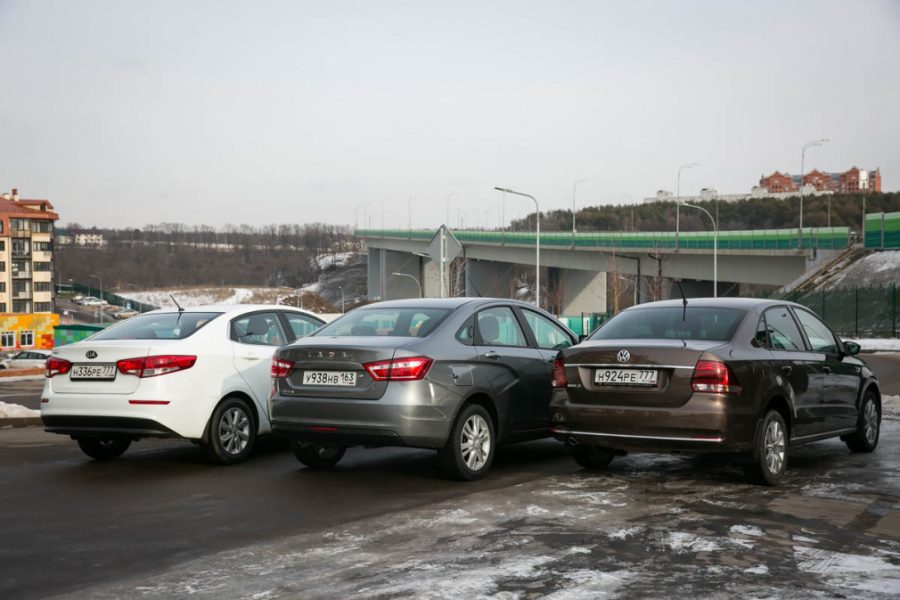
The cost of Vesta with the most complete set will be 100 thousand less than competitors, which should fully compensate for some of the disadvantages of the Togliatti car. The question of which of the three cars has a better set of equipment remains open, and the competitors have nothing to compensate for the advantages of an omnivorous suspension and a more spacious interior. Another important advantage of the Vesta is its large ground clearance, and such a Russification is certainly more relevant than the VHF range half-forgotten in Russia. And it cannot be spoiled in any way even by the office language of the operating instructions.
